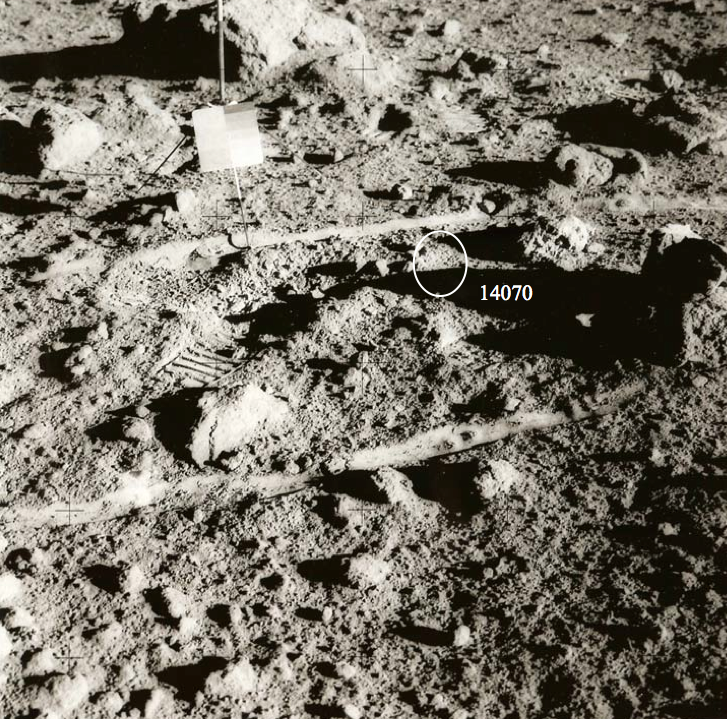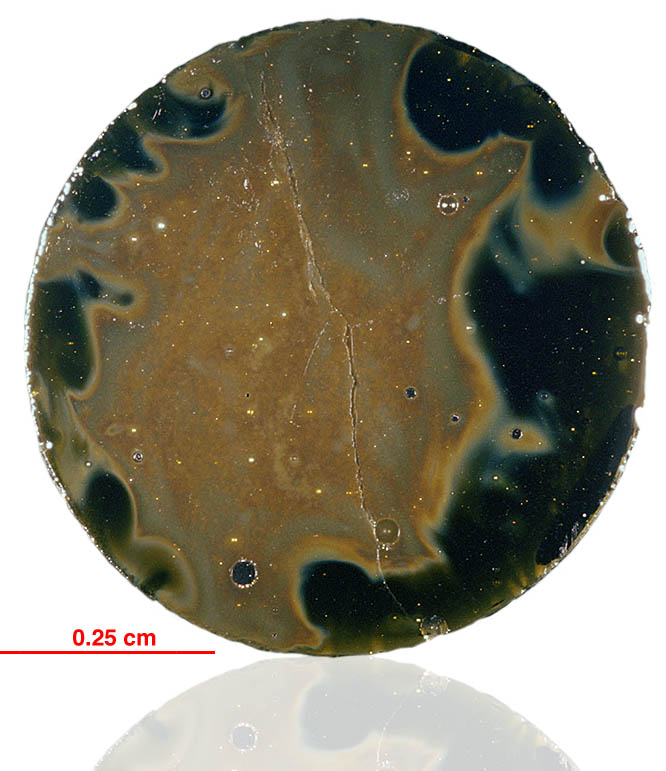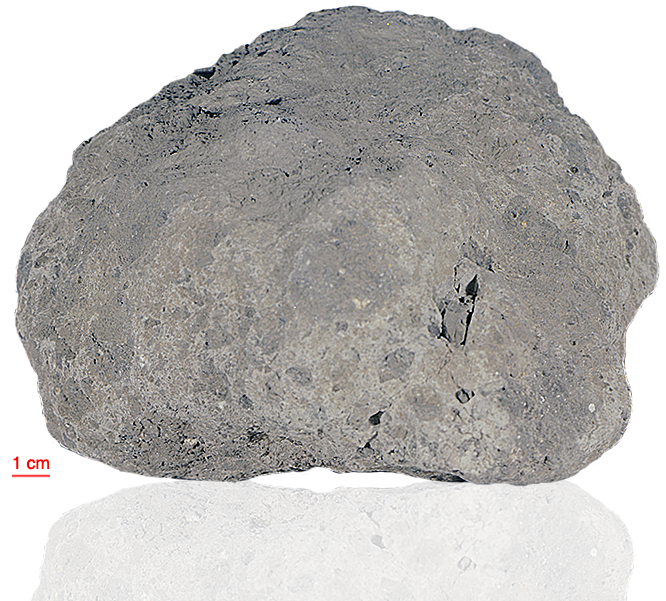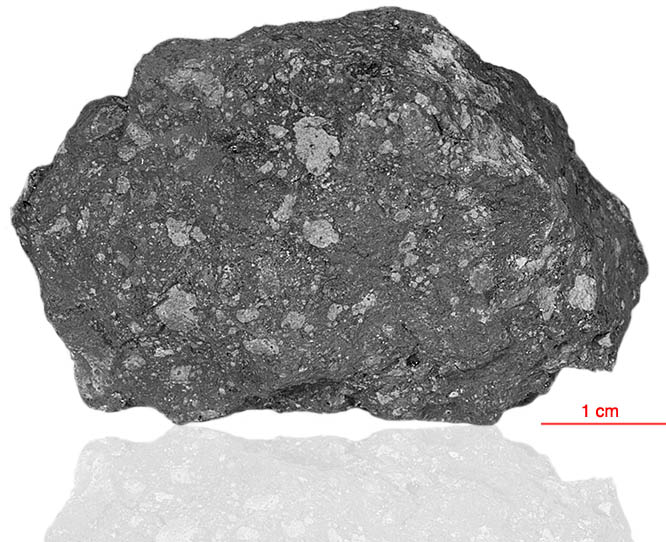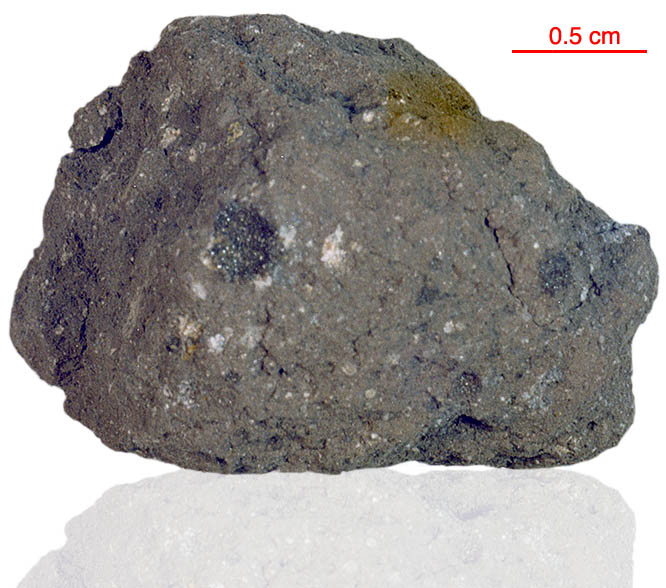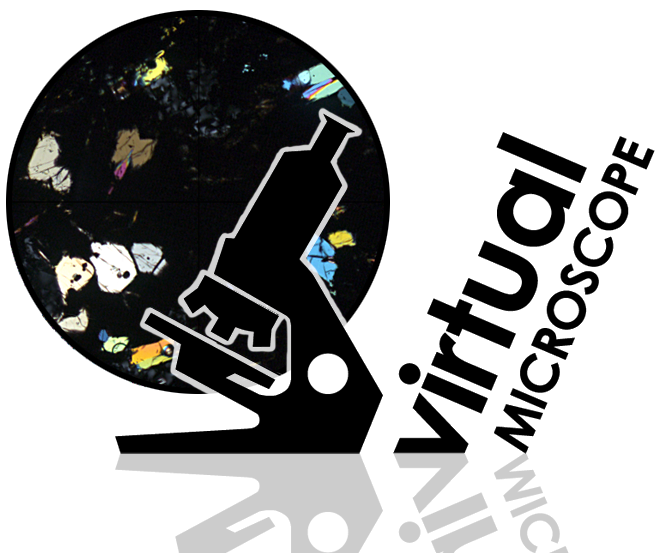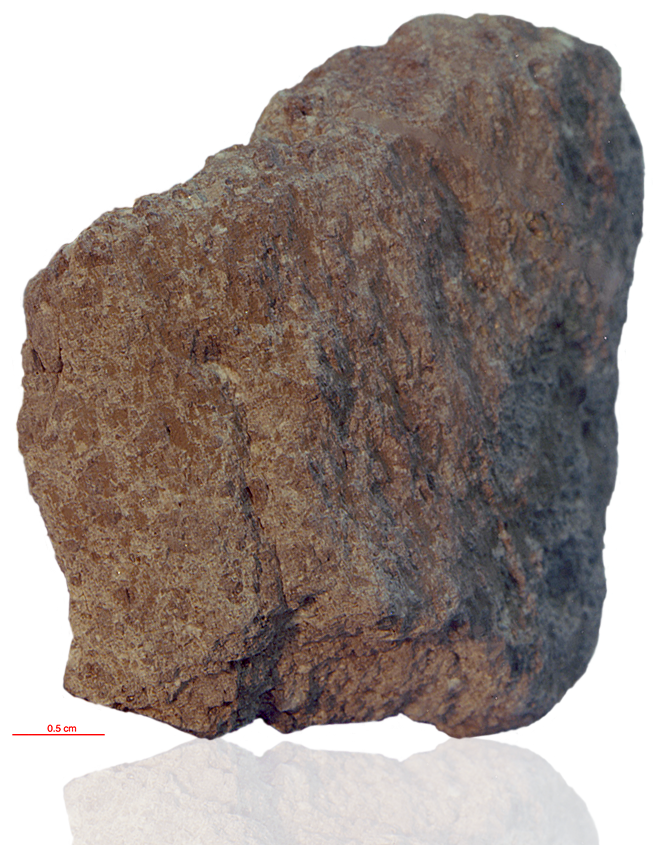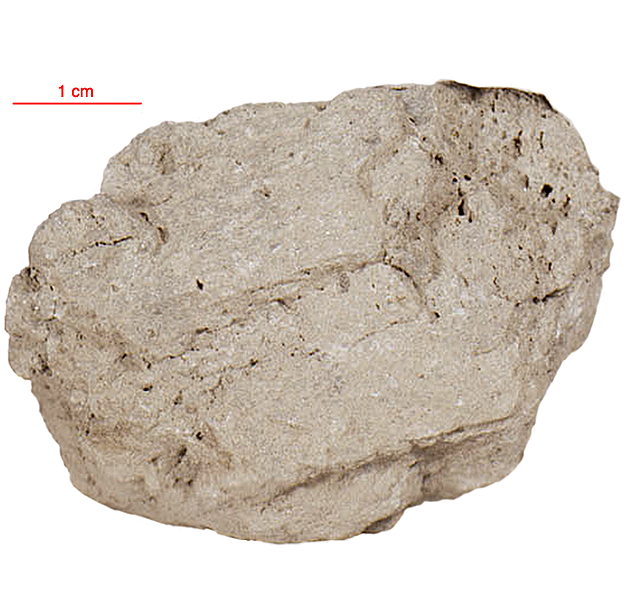
Fact sheet
14070 is a tan impact melt rock with fine crystalline matrix and large mineral clasts. Elsewhere it has vesicles, mare basalt clasts and other similarities with 14321. They are most likely pieces of the Fra Mauro Formation.
The sample weighed 36.56 grams before analysis and is 3.71±0.02 billion years old (Ar/Ar).
Rotation 1 shows a shocked anorthosite clast, and rotation 2 shows large pyroxene and plagioclase clasts.
Further details of this and other Apollo samples are here: http://curator.jsc.nasa.gov/lunar/
The Apollo 14 landing site was in a region formed by impact-basin debris.
Most of the 42 kilograms of rocks and soil collected on Apollo 14 are breccias (rocks that are composed of fragments of other, older rocks). In some cases, the rock fragments that form a breccia are themselves breccias. Such rocks obviously have experienced complex histories with multiple generations of impact events. Some breccias were heated enough that some of the material in the rock was melted.
Apollo 14 was launched on 31 January 1971.
